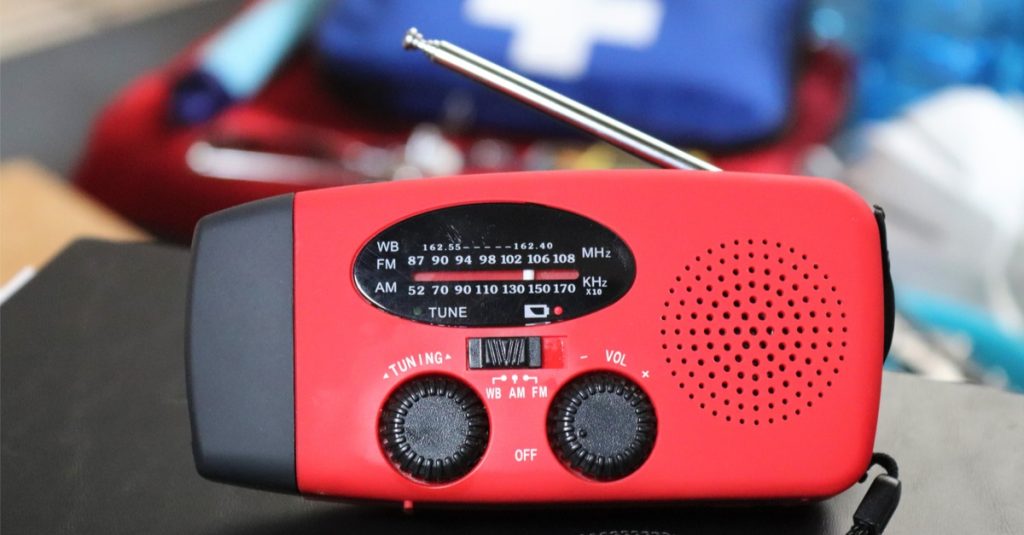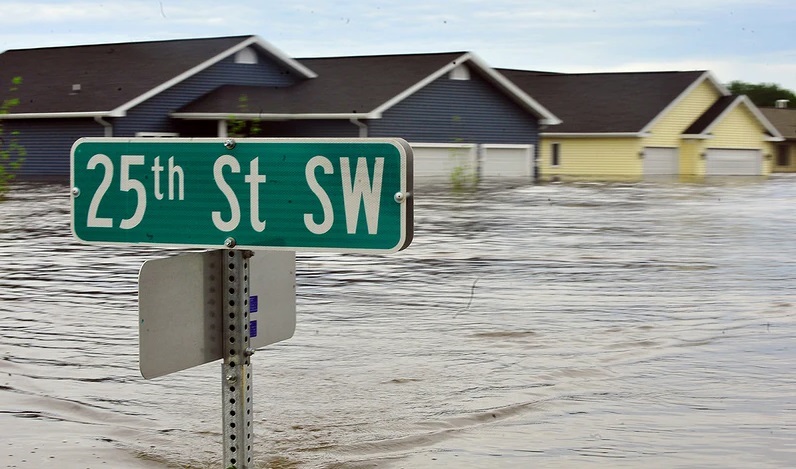Last Updated on February 20, 2023 by admin_hunter
Natural disasters are unavoidable and they can cause you to be without power for days or weeks. Being unprepared for a natural disaster can be devastating, and we want to make sure that no one finds themselves unprepared for the worst that can happen from a natural disaster.
That’s why we have compiled this list of natural disaster survival tips so that you can stay safe during a natural disaster.
- Tip #1: Follow Evacuation Orders
- Tip #2: Stock Up on Supplies and Medication
- Tip #3: Get a Weather Radio
- Tip #4: Withdraw Cash
- Tip #5: Keep Water Running
- Tip #6: Keep Your Shoes On
- Tip #7: Emergency Pet Supplies
- Tip #8: Wear a Helmet During a Tornado
- Tip #9: Firewood and Fire Starters
- Tip #10: Identification, Insurance Cards, and Medical Information
Tip #1: Follow Evacuation Orders
If you have been ordered to evacuate, you need to evacuate. Hurricanes are the best natural disaster to plan for. They are forecasted days in advance giving you plenty of time to find a safe place to go inland. If you choose to stay or haven’t been ordered to evacuate, you should find the safest place in your home to ride out the storm. You should stay away from windows and remain on the ground floor unless it starts to flood. Then you should seek higher ground immediately.
When evacuating, you should prepare a survival kit to keep in your car in case you become stranded. This includes blankets, extra food, and medical supplies.
Tip #2: Stock Up on Supplies and Medication
Electricity is often the first victim of a natural disaster, and you can be without power for days or weeks if the natural disaster is severe. You should stock up on supplies that will get you through when you don’t have power. This includes flashlights, batteries, blankets, and unperishable food. If you require daily medication, you should have at least three days’ worth of medication available in case you can’t get to your pharmacy after a natural disaster.
Tip #3: Get a Weather Radio

If you don’t have a NOAA weather radio, you need to get one. A NOAA weather radio will give you real-time alerts for your area including watches and warnings. A NOAA weather radio uses batteries so you don’t have to have electricity for it to work.
To receive weather alerts, just make sure your NOAA weather radio is turned on. That’s it. You don’t have to be actively listening to weather reports to receive a weather alert. The radio will sound an alarm when there is a weather watch or warning, and then it will tell you what the watch or warning is so that you can act accordingly.
No products found.
Tip #4: Withdraw Cash
When a natural disaster strikes and electricity goes down, so do communication lines. This includes electronic transactions like using a debit or credit card that require wireless communication to function. We recommend withdrawing cash before a natural disaster strikes so that you are able to pay for fuel, supplies, or medication when you can’t use a debit or credit card.
We recommend withdrawing around $150 in cash in small bills.
Tip #5: Keep Water Running
Winter storms with deep freezing temperatures can cause your pipes to freeze and burst, flooding your house. You can prevent this from happening by turning your faucets on in your house to a slow trickle. This will keep water moving in the pipes and prevent the water from freezing and bursting.
Tip #6: Keep Your Shoes On
This is especially important if there is a chance for tornadoes in your area. Tornadoes can cause significant damage to your home, including broken glass, tree limbs, and various debris that can be scattered throughout your home. Wearing shoes will keep your feet protected and allow you to walk over the debris as you leave your basement or safe room in your house.
Tip #7: Emergency Pet Supplies

Make sure your pet has enough food and water to last them throughout the duration of the natural disaster as well. If your pet is on medication, make sure you get enough medication to last your pets for three days. Your pet may also have a favorite bed, blanket, or toy. Keep your pet happy and comfortable during a natural disaster by having enough food, water, and necessities on hand for them.
Tip #8: Wear a Helmet During a Tornado
You need to protect your head during a tornado. Debris can easily get tossed around and you can’t predict where it will go. Wearing a helmet during a tornado will keep your head protected from any flying debris.
*If you don’t have a helmet, we recommend placing a mattress or other type of protection over your head that will protect your head during a tornado or straight-line winds.
Tip #9: Firewood and Fire Starters
During a winter storm, power is often lost because of the weight of the snow and ice on trees and power lines, causing you to be without central heating in your home. If you have a wood-burning fireplace, you should keep plenty of firewood and fire starters on hand if you lose heat. You and your family may have to huddle by the fireplace to keep warm but at least you will have a heat source.
A fire will also help you heat any canned foods you have in your survival kit. Just make sure you have a pot to heat over the fire and a can opener to open the canned goods.
- Trustworthy No Matter the Forecast: Our meticulously designed magnesium ferro rod is your upgrade from the traditional flint & steel. It creates fire starting with over 16,000 strikes at a scorching 5,500°F. Whether caught in rain, snow, or wind, rely on this indispensable kit to provide warmth, cook meals, and signal for help. Its unmatched reliability makes it a must-have in every adventurer's pack
- All-in-One Survival Tool: Beyond its primary fire-starting feature, it incorporates a precision compass for navigation, a 150dB whistle for emergency signaling, a robust steel scraper, and a 450 LB 8-core paracord for any situation & rod.
- Built to Stand the Test of Time: With materials chosen for their resilience and longevity, our tool set boasts a high-quality build that withstands the toughest environments. Its solid construction ensures it remains a dependable companion on your wildest adventures, from the damp depths of rainforests to the dry expanses of deserts.
- Compact Convenience: Our fire starter's design epitomizes the essence of portability without compromising on functionality. Weighing less than 2 ounces and measuring just 5 inches in length, it's engineered to fit seamlessly into any pack or pocket. The sturdy handle enhances grip and usability, making it easy to carry and use on the go. Our lightweight tool ensures you're always ready to spark a flame or find your way.
- The Perfect Emergency Kit: Each pack contains two meticulously designed fire starters, doubling your preparedness for any outdoor scenario. It's a comprehensive kit that prepares you for the unexpected, ensuring you're well-equipped to tackle the challenges of the great outdoors with confidence.
Tip #10: Identification, Insurance Cards, and Medical Information
After a natural disaster, you may be rescued by emergency responders. Worst-case scenario, you may be unconscious and unable to answer any questions the emergency responders are asking. Having proper identification including insurance cards and medical information will help first responders identify you as well as render you proper treatment, especially if you have a medical condition or allergy that may affect the type of treatment they choose for you.
Conclusion
As unpredictable as natural disasters can be, they are often forecasted a few days ahead of time. Take advantage of the time you have before the natural disaster occurs so that you can have everything you need to survive the natural disaster.
Even today when resources are abundant, a natural disaster can turn the most modern era primitive when there’s no heat, electricity, or cell phones; so you should always be prepared when a natural disaster strikes.


